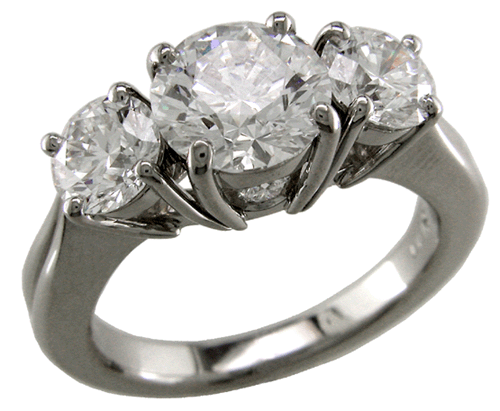|
View: 10511|Reply: 11
|
Perak & Besi Kalis Karat..
[Copy link]
|
|
|
|
pd mata kasar mmg takder beza Priki....tp dr segi kesukaran nak jelmakan Silver dengan stailess steel tu ada bezanya... |
|
|
|
|
|
|
|
|
|
|
|
antara pakai stainless steel ngan perak ..pemakai yg mana paling cepat kejung bila terpegang kabel bervoltan tinggi?  |
|
|
|
|
|
|
|
|
|
|
|
|
priki, patut tambah lagi satu...white gold |
|
|
|
|
|
|
|
|
|
|
|
ehehe.. thanks for your suggestion..
platinum tu sama ke eh dgn white gold?
tak compare kan ...
freekey Post at 1-2-2011 09:33 
rsnya mcm tak sama je..tp slalu kalo g habib jewel, yg platinum takder, white gold ada..yg platinum nie byk kat kedai jual diamond ring esp kat epot...
beza jugak dari segi harga..platinum nie mcm lebih murah jer..anyway, hanya jauhari mengenal manikam....hehhehe
Platinum

is a chemical element with the chemical symbol Pt and an atomic number of 78. Its name is derived from the Spanish term platina del Pinto, which is literally translated into "little silver of the Pinto River."[1] It is a dense, malleable, ductile, precious, gray-white transition metal. Even though it has six naturally occurring isotopes, platinum is one of the rarest elements in the Earth's crust and has an average abundance of approximately 0.005 mg/kg. It occurs in some nickel and copper ores along with some native deposits, mostly in South Africa, which accounts for 80% of the world production.
As a member of the platinum group of elements, as well as of the group 10 of the periodic table of elements, platinum is generally unreactive. It exhibits a remarkable resistance to corrosion, even at high temperatures, and as such is considered a noble metal. As a result, platinum is often found chemically uncombined as native platinum. Because it occurs naturally in the alluvial sands of various rivers, it was first used by pre-Columbian South American natives to produce artifacts. It was referenced in European writings as early as 16th century, but it was not until Antonio de Ulloa published a report on a new metal of Colombian origin in 1748 that it became investigated by scientists.
Platinum is used in catalytic converters, laboratory equipment, electrical contacts and electrodes, platinum resistance thermometers, dentistry equipment, and jewelry. Because only a few hundred tonnes are produced annually, it is a scarce material, and is highly valuable and is a major precious metal commodity. Being a heavy metal, it leads to health issues upon exposure to its salts, but due to its corrosion resistance it is not toxic as a metal. Some of its compounds, most notably Cisplatin, are applied in chemotherapy against certain types of cancer.
source-->http://en.wikipedia.org/wiki/Platinum
White gold

is an alloy of gold and at least one white metal, usually nickel, manganese or palladium. Like yellow gold, the purity of white gold is given in karats.
White gold's properties vary depending on the metals and proportions used. As a result, white gold alloys can be used for different purposes; while a nickel alloy is hard and strong and therefore good for rings and pins, gold-palladium alloys are soft, pliable and good for white gold gemstone settings, sometimes with other metals like copper, silver, and platinum for weight and durability, although this often requires specialized goldsmiths. The term white gold is used very loosely in the industry to describe karat gold alloys with a whitish hue. Many believe that the color of the rhodium plating, which is seen on many commercial pieces, is actually the color of white gold. The term "white" covers a large spectrum of colors that borders or overlaps pale yellow, tinted brown, and even very pale rose. The jewelry industry often hides these off-white colors by rhodium plating.
A common white gold formulation consists of 90 wt.% gold and 10 wt.% nickel.[1] Copper can be added to increase malleability.[2]
The strength of gold-nickel-copper alloys is caused by formation of two phases, a gold-rich Au-Cu, and a nickel-rich Ni-Cu, and the resulting hardening of the material.[2]The alloys used in jewelry industry are gold-palladium-silver and gold-nickel-copper-zinc. Palladium and nickel act as primary bleaching agents for gold; zinc acts as a secondary bleaching agent to attenuate the color of copper
source-->http://en.wikipedia.org/wiki/Colored_gold#White_gold |
|
|
|
|
|
|
|
|
|
|
|
OK thanks..
Cantiknya white gold ni..
Tp platinum tu for sure lg mahal dr silver kan?? Huhu..
freekey Post at 1-2-2011 09:51 
maybe kot?cincin yg ada diamond mmg cantik..... ..lagi2 yg custom design... ..lagi2 yg custom design... |
|
|
|
|
|
|
|
|
|
| |
Category: Belia & Informasi
|